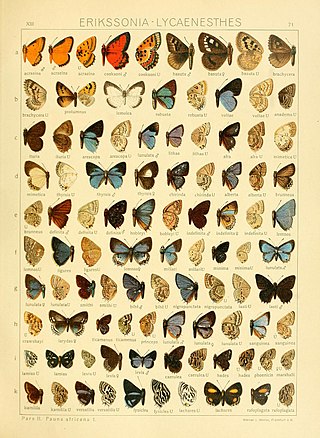| Harpendyreus | |
|---|---|
| | |
| Type illustration of H. juno | |
| Scientific classification | |
| Domain: | Eukaryota |
| Kingdom: | Animalia |
| Phylum: | Arthropoda |
| Class: | Insecta |
| Order: | Lepidoptera |
| Family: | Lycaenidae |
| Subfamily: | Polyommatinae |
| Tribe: | Polyommatini |
| Genus: | Harpendyreus Heron, 1909 |
Harpendyreus is a genus of butterflies in the family Lycaenidae.
Small butterflies (wingspan 17–24 millimetres) with rounded wings without a tail at the back. The upper parts of the males are bright blue to reddish-violet, often with a small, black spot at the hind corner of the hindwing. The underparts are reddish-brown with slightly darker transverse bands, but without black spots.
The species are found along rivers and streams in high-altitude forests. The larvae feed on various low herbs, including lady's mantle , mints and sage.
The genus is distributed in sub-Saharan Africa, mostly in the eastern and southern parts.




